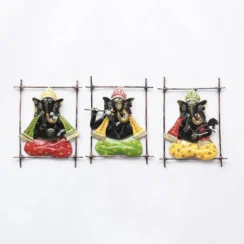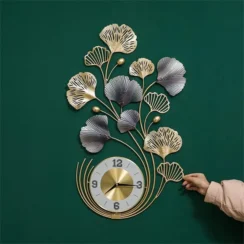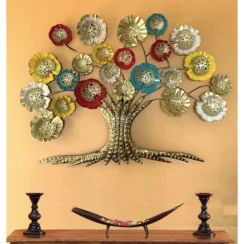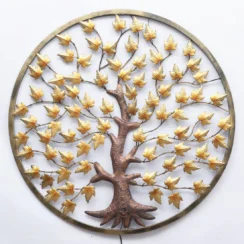Why Did Gandhiji Want to Teach Children Handicrafts?
Mahatma Gandhi, the father of the Indian nation, was not only a visionary leader but also a profound educator. He believed that education should be holistic and transformative, preparing individuals for life rather than merely equipping them for a career. Among his many educational philosophies, one stands out—his emphasis on teaching children handicrafts. This blog delves deep into the rationale behind Gandhiji’s advocacy for handicrafts in education, exploring its relevance in shaping the future of individuals and society and Why Did Gandhiji Want to Teach Children Handicrafts?
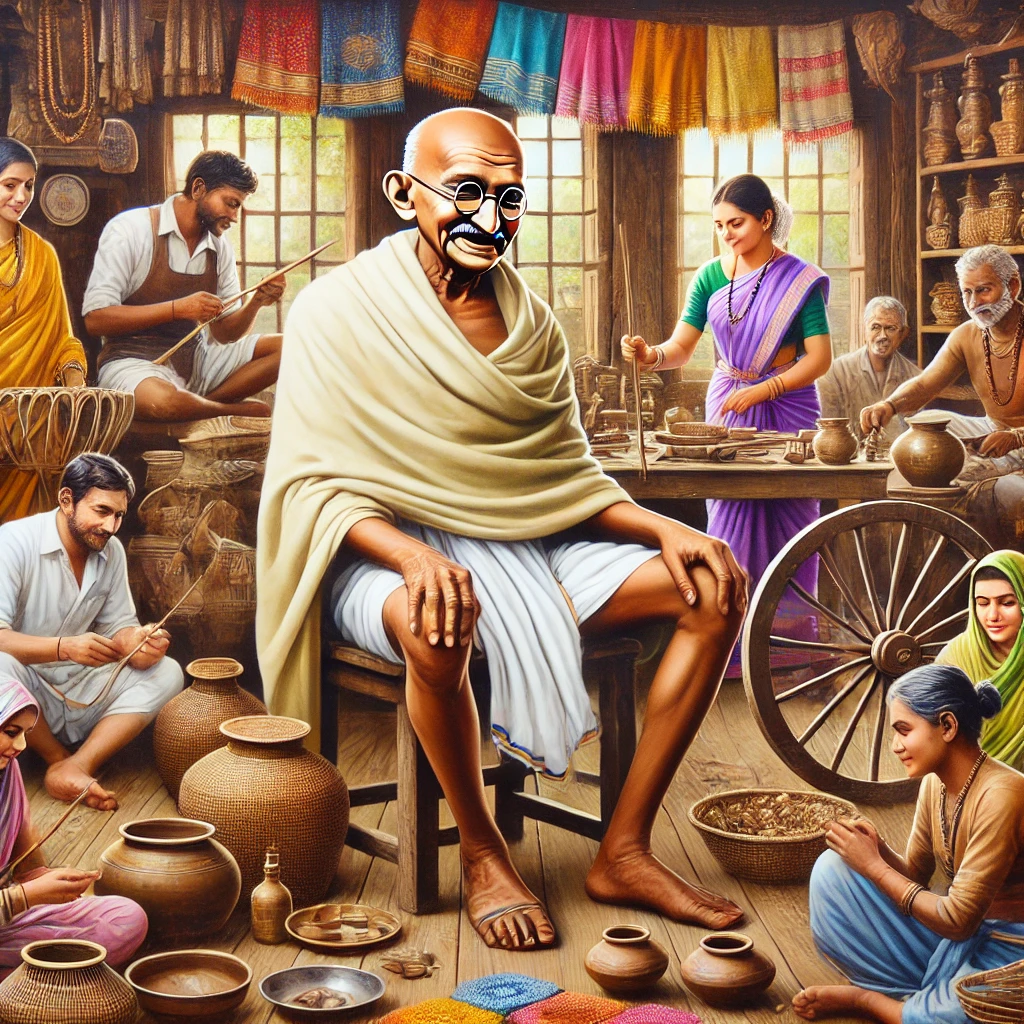
The Philosophy Behind Gandhiji’s Educational Vision
Gandhiji’s philosophy of education, known as “Nai Talim” or Basic Education, was rooted in the integration of work and education. He envisioned an education system that was:
- Self-Sufficient: Education should not be a financial burden but a self-sustaining process.
- Skill-Oriented: Students should acquire practical skills that make them economically independent.
- Holistic: Education should cater to the physical, mental, and spiritual development of individuals.
Handicrafts were central to this vision because they fulfilled all these criteria. Let’s explore the reasons why did Gandhiji want to teach children handicrafts? in detail.
1. Bridging the Gap Between Education and Livelihood
Gandhiji believed that traditional education systems alienated children from their cultural and economic roots. By incorporating handicrafts into the curriculum, students could:
- Learn Practical Skills: Children could acquire skills like weaving, pottery, or carpentry, which were directly useful in earning a livelihood.
- Reduce Dependence on White-Collar Jobs: Handicrafts provided an alternative to the growing obsession with office jobs, which were often scarce and competitive.
- Empower Rural Economies: Many handicrafts were deeply rooted in rural traditions. Teaching these skills to children helped sustain local industries and reduced migration to urban areas.
2. Instilling a Sense of Dignity in Labor
In colonial India, manual labor was often looked down upon. Gandhiji wanted to challenge this societal mindset. He believed:
- All Work is Equal: Teaching handicrafts instilled respect for manual labor, breaking the hierarchical notions of work.
- Character Building: Working with one’s hands fostered humility, patience, and perseverance in children.
- Self-Reliance: Children learned to depend on their skills rather than external resources, making them more confident and independent.
3. Encouraging Creativity and Innovation
Handicrafts are not just about following traditional methods; they also encourage creativity and innovation. Gandhiji believed that:
- Creative Thinking: By engaging in activities like weaving or pottery, children could think outside the box and solve problems creatively.
- Innovation in Tradition: Students could modernize traditional crafts to suit contemporary needs, keeping them relevant in a changing world.
- Artistic Expression: Handicrafts offered an avenue for children to express themselves artistically, enriching their emotional and mental well-being.
4. Promoting Self-Sufficiency and National Pride
During Gandhiji’s time, India was heavily dependent on imported goods, particularly from Britain. Teaching handicrafts served as a means to:
- Reduce Dependency on Imports: By producing their own goods, Indians could weaken the economic hold of the British Empire.
- Revive Traditional Industries: Handicrafts like khadi weaving were central to India’s freedom movement, symbolizing self-reliance and resistance to colonial rule.
- Foster National Pride: Children learned to value their cultural heritage and contribute to the nation’s development.
5. Holistic Development of Children
Gandhiji believed that education should not only focus on intellectual growth but also on physical, emotional, and spiritual development. Handicrafts contributed to this holistic growth by:
- Enhancing Motor Skills: Activities like weaving or pottery required dexterity and coordination, improving fine motor skills.
- Developing Focus and Discipline: Handicrafts demanded attention to detail and consistency, traits that benefited children in all aspects of life.
- Fostering Emotional Well-Being: Creating something with their hands gave children a sense of accomplishment and joy.
6. Creating a Sustainable and Inclusive Society
Gandhiji’s vision for handicrafts was not limited to individual benefits; it extended to societal transformation. He believed:
- Reducing Inequality: Handicrafts provided a means for the underprivileged to earn a livelihood, bridging economic disparities.
- Sustainability: Traditional crafts often used eco-friendly materials and methods, promoting sustainable practices.
- Community Bonding: Handicrafts often involved collective effort, fostering a sense of community and mutual support.
7. Aligning Education with Local Needs
One of the major criticisms of the colonial education system was its irrelevance to the needs of Indian society. Gandhiji’s emphasis on handicrafts addressed this issue by:
- Contextual Learning: Students learned skills that were directly applicable to their local environments and economies.
- Preserving Cultural Heritage: Handicrafts helped preserve traditional knowledge and practices that were at risk of being forgotten.
- Empowering Rural Communities: By focusing on crafts specific to rural areas, education became a tool for rural development.
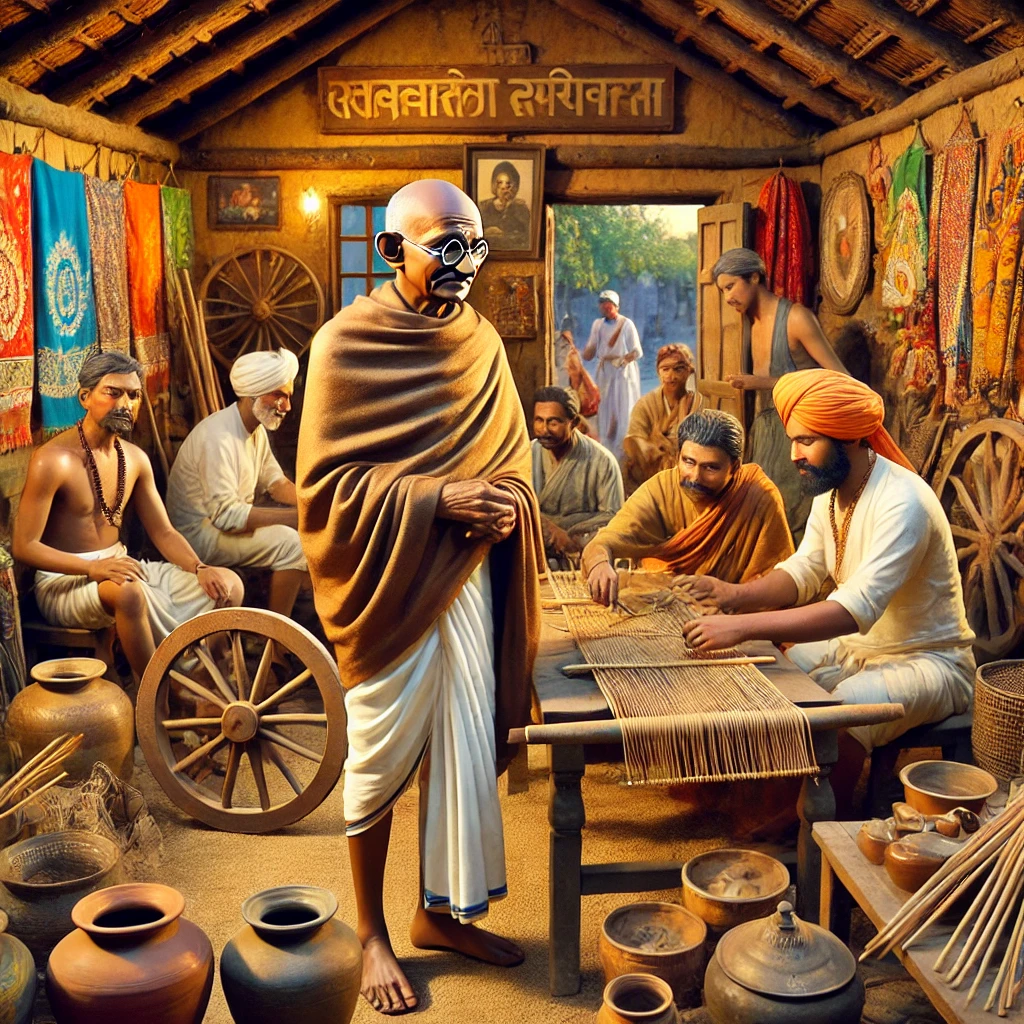
8. Reducing the Divide Between the Educated and the Uneducated
Gandhiji was deeply concerned about the growing divide between the educated elite and the uneducated masses. Teaching handicrafts was a way to:
- Create Equal Opportunities: Handicrafts leveled the playing field, offering everyone a chance to learn and earn.
- Break Social Barriers: Shared participation in manual work fostered a sense of equality and mutual respect.
- Integrate Education with Life: Handicrafts made education more accessible and relevant to all sections of society.
9. The Role of Khadi in Gandhiji’s Vision
Khadi, a hand-spun and hand-woven fabric, was central to Gandhiji’s philosophy. Teaching children to spin khadi:
- Symbolized Self-Reliance: Khadi became a symbol of India’s struggle for independence and self-sufficiency.
- Promoted Swadeshi Movement: It encouraged the use of Indian-made goods, boosting local economies.
- Instilled Discipline: Spinning khadi required focus and patience, qualities that Gandhiji valued deeply.
Relevance of Gandhiji’s Vision Today
Even in the modern era, Gandhiji’s advocacy for handicrafts holds significant relevance:
- Skill-Based Education: In today’s rapidly changing job market, practical skills are more important than ever.
- Sustainability: Handicrafts promote eco-friendly practices, aligning with global efforts to combat climate change.
- Cultural Preservation: In a globalized world, preserving local traditions and crafts is crucial for maintaining cultural diversity.
- Mental Health Benefits: Engaging in creative activities has been shown to reduce stress and improve mental well-being.
Challenges and the Way Forward
While Gandhiji’s vision for handicrafts in education is inspiring, its implementation faces challenges:
- Changing Mindsets: Overcoming societal biases against manual labor is still a significant hurdle.
- Integrating Technology: Balancing traditional methods with modern technology can make handicrafts more appealing to today’s youth.
- Policy Support: Government policies need to prioritize skill-based education and provide resources for teaching handicrafts.
Conclusion
Why Did Gandhiji Want to Teach Children Handicrafts? It was not just about imparting skills; it was a comprehensive vision for individual and societal transformation. By bridging the gap between education and livelihood, instilling dignity in labor, and promoting self-sufficiency, handicrafts addressed some of the most pressing issues of his time—many of which remain relevant today. As we navigate the complexities of the modern world, revisiting Gandhiji’s ideas can offer valuable insights into creating an education system that is inclusive, sustainable, and deeply connected to the realities of life.





